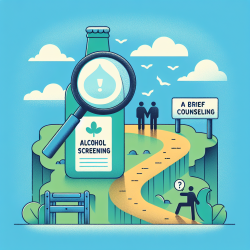Introduction
Child welfare investigations are crucial for identifying and addressing potential maltreatment. Healthcare professionals, both in hospital and community settings, play a vital role in these investigations. A recent study titled "Characteristics of child welfare investigations reported by healthcare professionals in Ontario: secondary analysis of a regional database" sheds light on the distinct characteristics and outcomes of these investigations. This blog explores how practitioners can enhance their skills by understanding and implementing the findings of this research.
Key Findings of the Study
The study analyzed 7,590 child maltreatment-related investigations from the Ontario Incidence Study of Reported Child Abuse and Neglect-2018. It highlighted the differences between hospital-based and community-based healthcare professionals in reporting child welfare cases. Here are some key findings:
- Hospital-reported investigations often focus on assessing the risk of future maltreatment and involve primary caregiver and household risk factors, such as mental health issues, substance abuse, and intimate partner violence (IPV).
- Community healthcare-reported investigations are more likely to have a primary concern of physical abuse.
- The most significant predictor of service provision following an investigation was having a caregiver identified as a victim of IPV in hospital-reported cases, and having a caregiver with few social supports in community healthcare-reported cases.
Implications for Practitioners
Understanding these findings can significantly enhance the effectiveness of practitioners in identifying and addressing child maltreatment. Here are some practical steps practitioners can take:
- Enhanced Risk Assessment: Practitioners should be vigilant in assessing risk factors, especially those related to caregivers, such as IPV and substance abuse. This is particularly crucial in hospital settings where acute crises may present.
- Community Engagement: Community-based healthcare providers should leverage their routine interactions with families to identify early signs of maltreatment, particularly physical abuse. Building strong relationships with families can facilitate early intervention.
- Collaboration with Child Welfare Agencies: Effective communication and collaboration with child welfare agencies can ensure that families receive the necessary support services. Practitioners should be proactive in making referrals and following up on cases.
Encouraging Further Research
The study underscores the importance of ongoing research in child welfare investigations. Practitioners are encouraged to engage in further research to explore additional factors influencing child maltreatment and to develop innovative intervention strategies. By staying informed through publications, webinars, and conferences, practitioners can continue to enhance their skills and contribute to the well-being of children and families.
Conclusion
Healthcare professionals are uniquely positioned to identify and report child maltreatment. By understanding the findings of this study, practitioners can improve their skills in risk assessment, community engagement, and collaboration with child welfare agencies. This will ultimately lead to better outcomes for children and families at risk.
To read the original research paper, please follow this link: Characteristics of child welfare investigations reported by healthcare professionals in Ontario: secondary analysis of a regional database.










